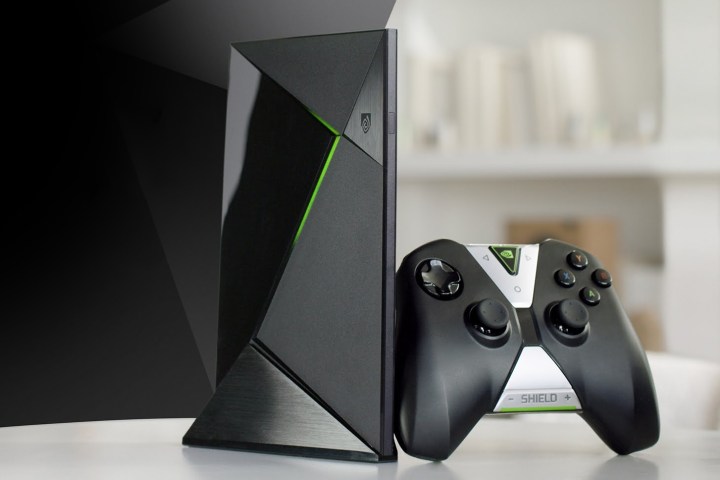
Nvidia’s first Shield-branded device was the controller-shaped Shield Portable in 2013 packing a flip-open 5-inch touch-enabled screen, the Tegra 4 processor, 2GB of system memory, and 16GB of internal storage. For some reason, Nvidia ditched that design and went with the Shield Tablet the following year using the Tegra K1 chip, and then re-released the device as the Shield Tablet K1 in 2015. Nvidia had planned to upgrade the tablet in 2016 but announced its cancellation in August.
Thus, with the Shield Portable and Shield Tablet K1 on the market, Nvidia decided to release the Shield Android TV set-top box in May 2015. It’s considered as the third-generation of the Shield family, using Nvidia’s Tegra X1 processor, 3GB of system memory, and a choice of 16GB of storage or 500GB in a “Pro” model. It’s based on Google’s Android TV platform, providing users with access to Google’s Android-based ecosystem just like the prior Shield devices.
With the Shield history out of the way, Nvidia will reportedly showcase a new Shield Android TV device at CES 2017 in early January. It won’t be a major upgrade according to unnamed sources. Even more, the bundled controller will only see a slight improvement, ditching Wi-Fi Direct for Bluetooth Low Energy. It will have better battery optimizations too as will the Shield Controller.
In addition to revealing the new Shield Android TV set-top box, Nvidia is expected to talk about how it will handle 4K content. The current model is capable of 4K HDR content, providing playback at 60 frames per second and capture at 30 frames per second. Connectivity includes Wireless AC via MIMO antennas, Bluetooth 4.1/BLE, and HDMI 2.0 with HDCP 2.2.
Finally, there is speculation the updated Shield Android TV device may repeat what Nvidia did with the Shield Tablet: pull out a few features and serve it up at a reduced cost. However, everything is up in the air at this point, including whether Nvidia will go with an additional “Pro” version of the updated Shield
Editors' Recommendations
- Nvidia Shield updates all models to Android 11
- Sony CES 2021 TV lineup: Sony is back In a big way
- Samsung’s 2021 TV lineup surprises with Neo QLED, more MicroLED TVs
- Roku TV Ready lets you control your entire soundbar from a Roku TV remote
- Vizio launches its first OLED 4K TV and doubles down on quantum dots at CES 2020



